Heading out for a day hike in a national park? Great choice! Whether you're gearing up to trek through lush forests, admire stunning vistas, or enjoy quality time outdoors, being prepared is key.

In this article, we've put together your ultimate packing checklist to help make sure you have everything you need for a fantastic day on the trails.
Let’s get you ready for an adventure you won’t forget!
Essential Gear and Clothing
Choosing the right gear and clothing for your day hike is crucial to staying comfortable and safe. Make sure your pack fits well with the weather and terrain you might encounter in the national park.
1. Appropriate Footwear
First up, for comfortable and secure footing, it's important to have the right hiking shoes, sandals, or boots. They should give you good support and have grippy soles for those rocky or slippery trails.
If you're hiking in wet conditions, go for lightweight water sandals or multi-sport shoes. These are great for crossing streams or walking through mud because they're designed to dry quickly and don't carry much weight.
And don't forget to wear hiking socks to help prevent blisters and keep your feet comfy all day.
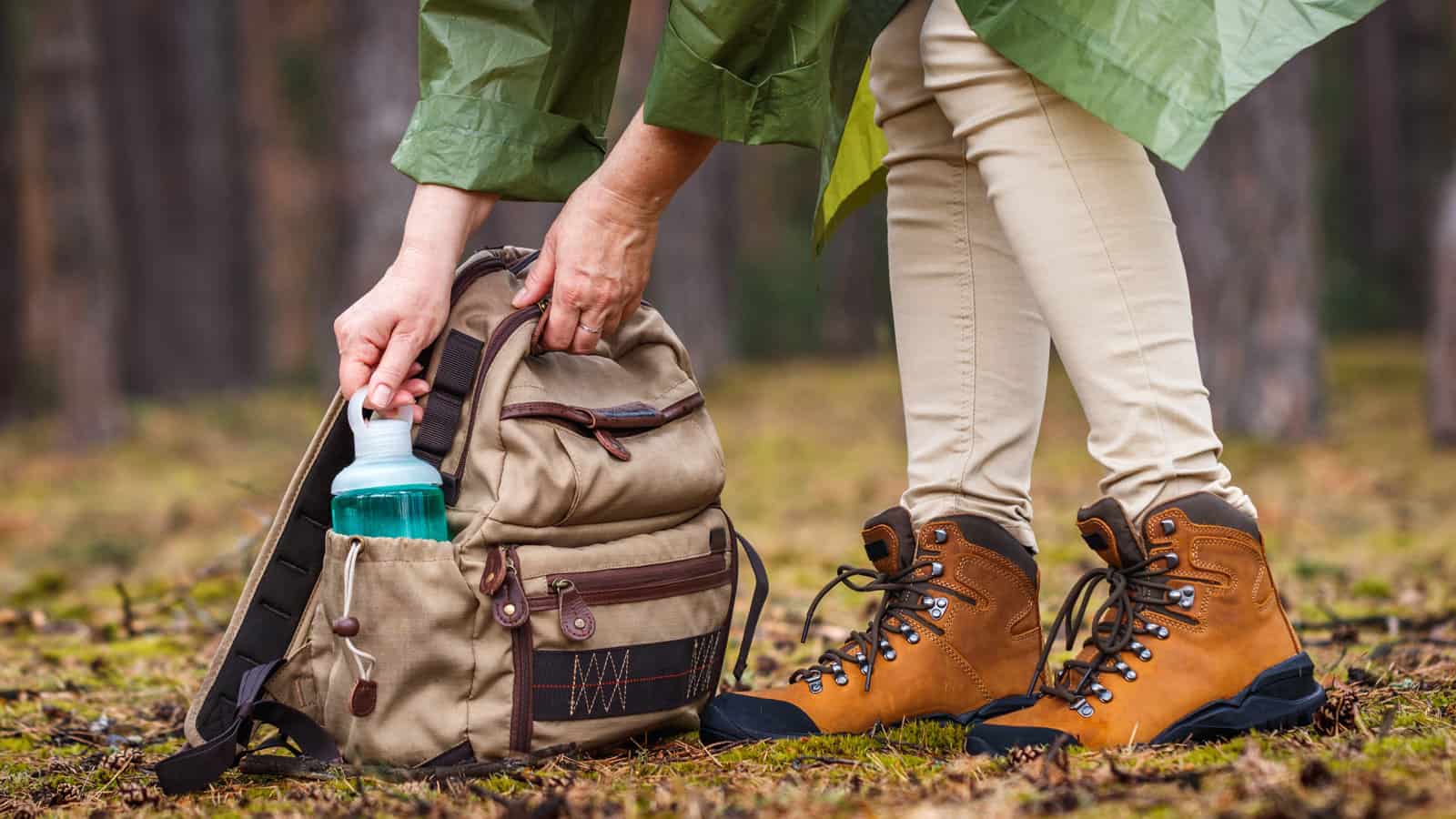
2. Weather-Ready Clothing
Dressing in layers is a smart way to handle changing temperatures and weather when you're hiking.
Start with a moisture-wicking base layer, add an insulating fleece or vest, and top it off with a waterproof rain jacket.
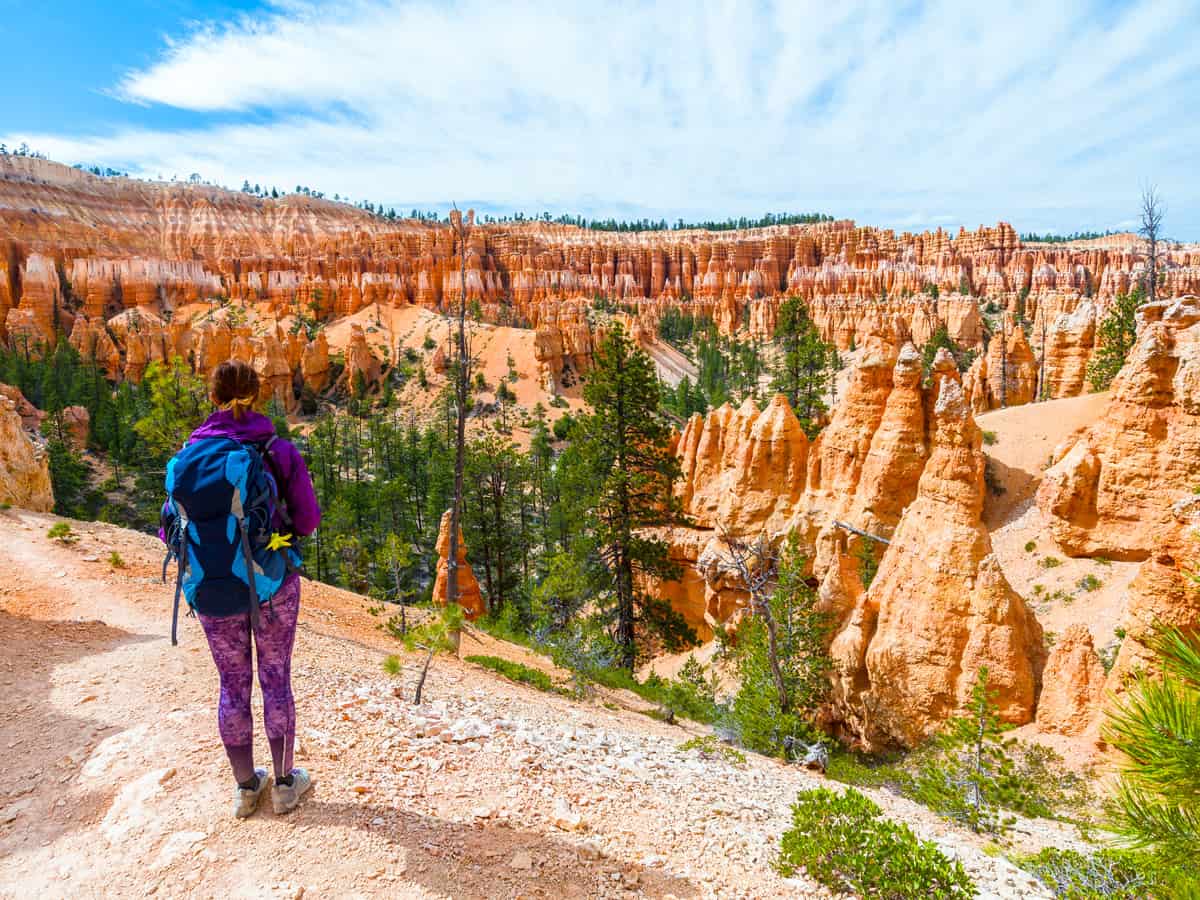
Don't forget sun protection; a hat and sunglasses are must-haves on sunny days. Pack gloves and a warm hat for colder hikes to retain body heat.
3. Navigation Tools
Even on well-marked trails, you can't count on cell service for directions. Always pack a physical map and compass in your hiking bag. They're light, don’t need batteries, and can really save the day if you lose your way.
If you plan to explore all the trails in US national parks, consider picking up a National Parks guide. It comes packed with insider tips, itineraries, and full-color maps of trails and parks to enhance your adventure.

This one covers 52 full-color trail and park maps, which you can learn more about on Amazon.

If you want a more comprehensive guide, this National Geographic Guide covers 80 full-color maps! You can get this on paperback or spiral-bound on Amazon.
Also, consider bringing binoculars and a GPS device for longer trails or unfamiliar areas as part of your hiking essentials.
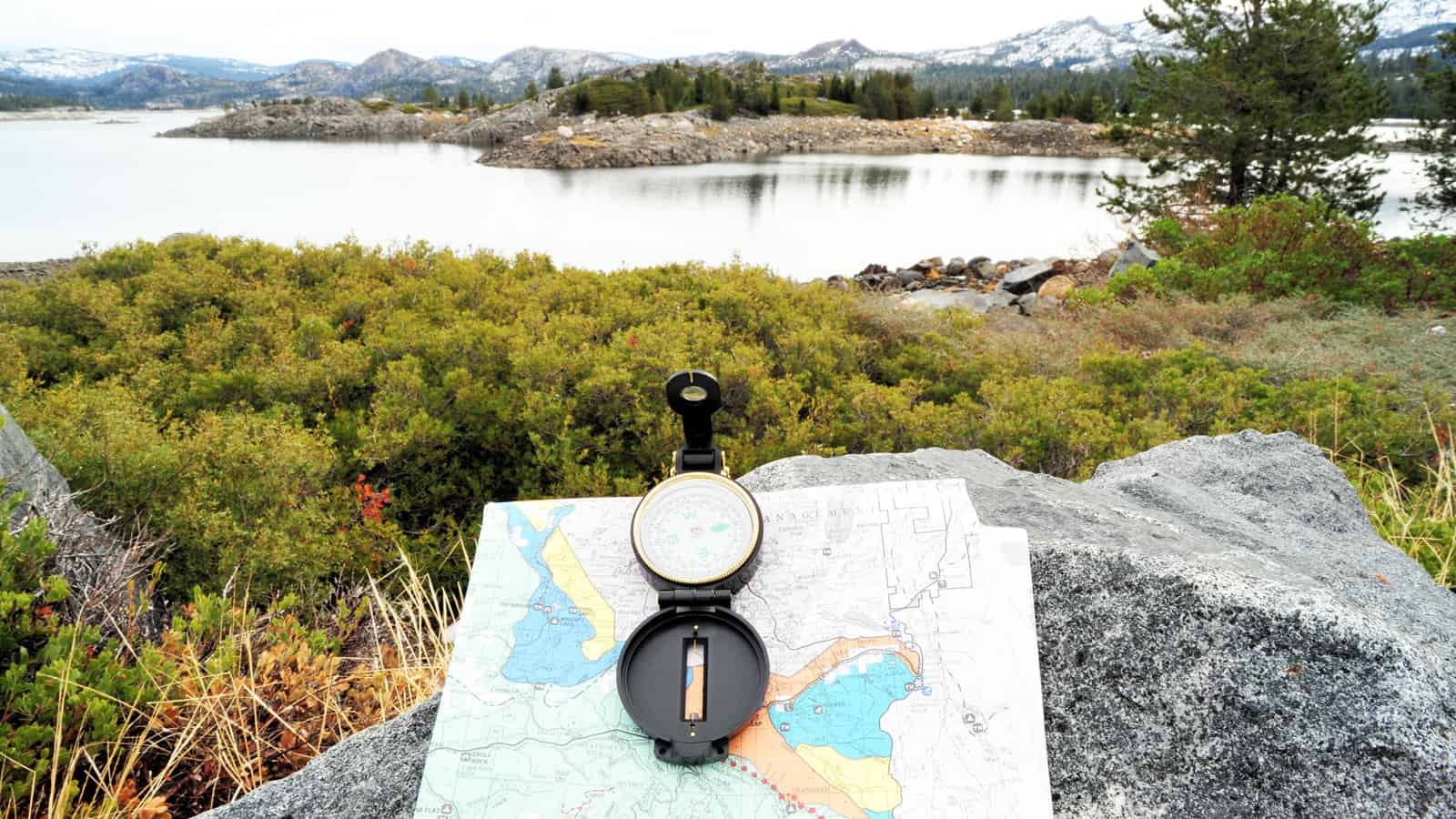
Nutrition and Hydration
Now that you're all set with the gear, let's talk food and water! Keeping your energy levels up and staying hydrated is crucial for enjoying your day in the national park.
1. Food for Energy
Go for complex carbs like whole-grain tortillas or oatmeal bars—they taste good and provide a slow release of energy to keep you going longer.

Don’t forget about protein, which helps with muscle repair and gives you sustained strength. Jerky or a trail mix with nuts can be both tasty and nourishing.
Fruits are also a great choice! Fresh apples offer natural sugars and vitamins, while dried fruits are light to carry and give a quick energy boost.
It's important to remember to pack food that won't spoil easily and to choose items that offer the right nutrients for endurance and strength, ensuring you have the energy to enjoy your hike fully.

If you're looking to pack light, consider this high-energy trail mix that's both nutritious and convenient. You can find this on Amazon.
2. Hydration Systems
Bringing a reusable water bottle and maybe even a hydration reservoir can make it super easy to drink water on the go without having to stop and search for bottles.
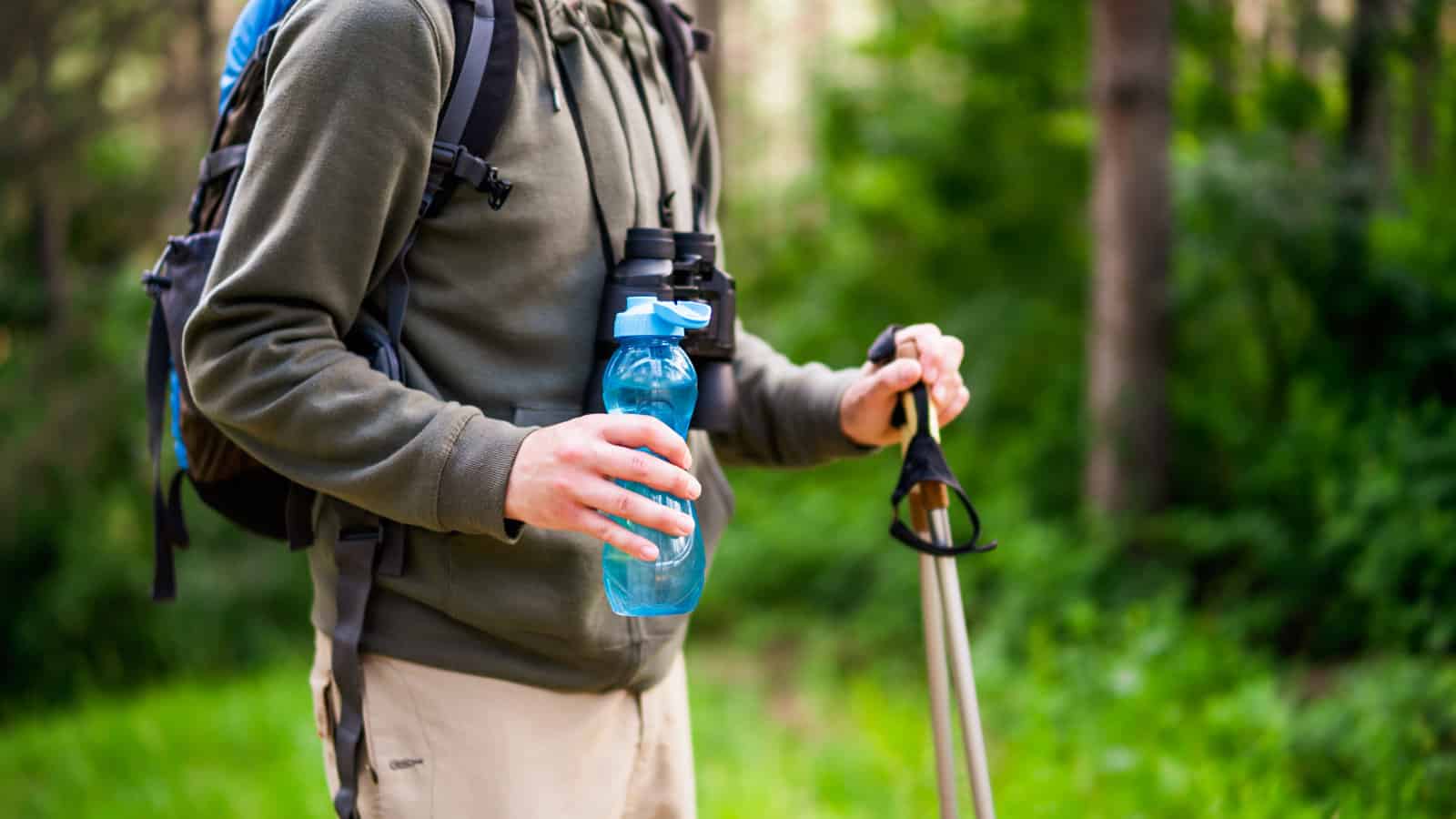
Carrying a water filter is also wise. This lets you safely refill from natural sources when needed, helping you avoid dehydration without the hassle of carrying all your water for the day.
That’s why we’re big fans of this gravity-fed water bag. It’s incredibly portable and can be folded down, making it easy to pack for any hiking or backpacking trip.

We picked ours up from Amazon. If you're interested, you can check it out and grab one for yourself by clicking here to see this water filter on Amazon.
If you plan a long hike, consider packing some electrolyte tablets or packets, too! They can help replenish salts and keep you going strong.
Keep an eye on how much water you're drinking, especially if it's hot or the hike is tough. A good rule of thumb is to drink about half a liter of water per hour of moderate activity in moderate temperatures.
Safety and Emergency Preparedness
You'll also want to focus on safety and emergency readiness when preparing for a day hike in a national park.
Pack essential items for health emergencies and tools that help you handle any unexpected situations effectively. This way, you'll be ready for anything that comes your way on the trail.
1. First Aid and Health
Your first aid kit is an absolute must-have in your pack. Make sure it has bandages, antiseptic wipes, adhesive tape, something for blisters, pain relievers, and tweezers.

We really like this mini first aid kit — though compact, it has everything you need for basic emergencies. You can grab this product from Amazon.
Don’t forget any personal medications you might need, too. For sun protection, always carry sunscreen and use SPF lip balm to keep your skin safe.
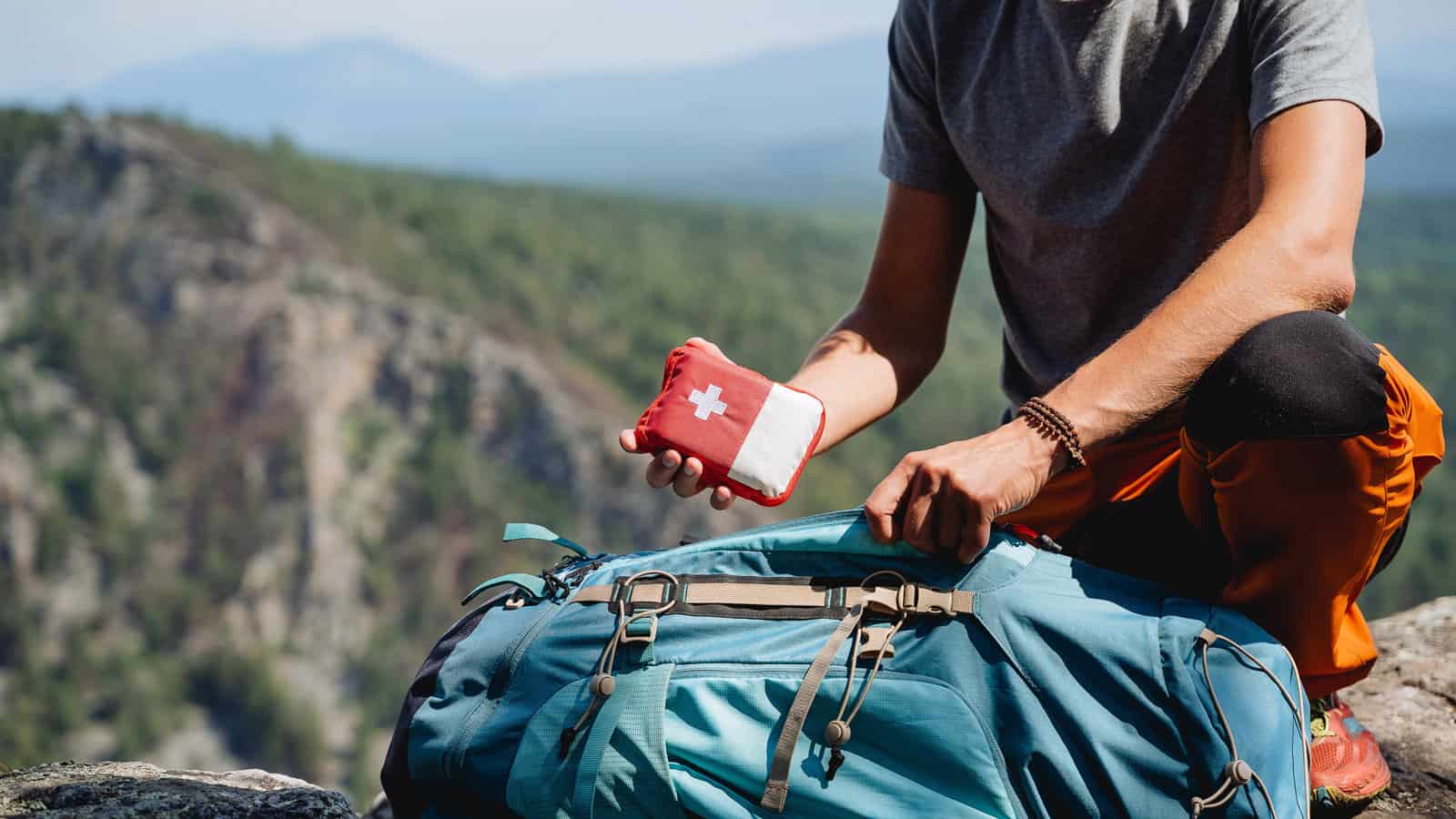
2. Emergency Equipment and Tools
In case of an emergency, it's crucial to be well-prepared with the right equipment. Make sure you have a reliable fire starter and some form of emergency shelter, like a lightweight tent or a bivy sack.
These can be lifesavers if you end up having to stay overnight unexpectedly. And if you're in bear country, don't forget the bear spray.
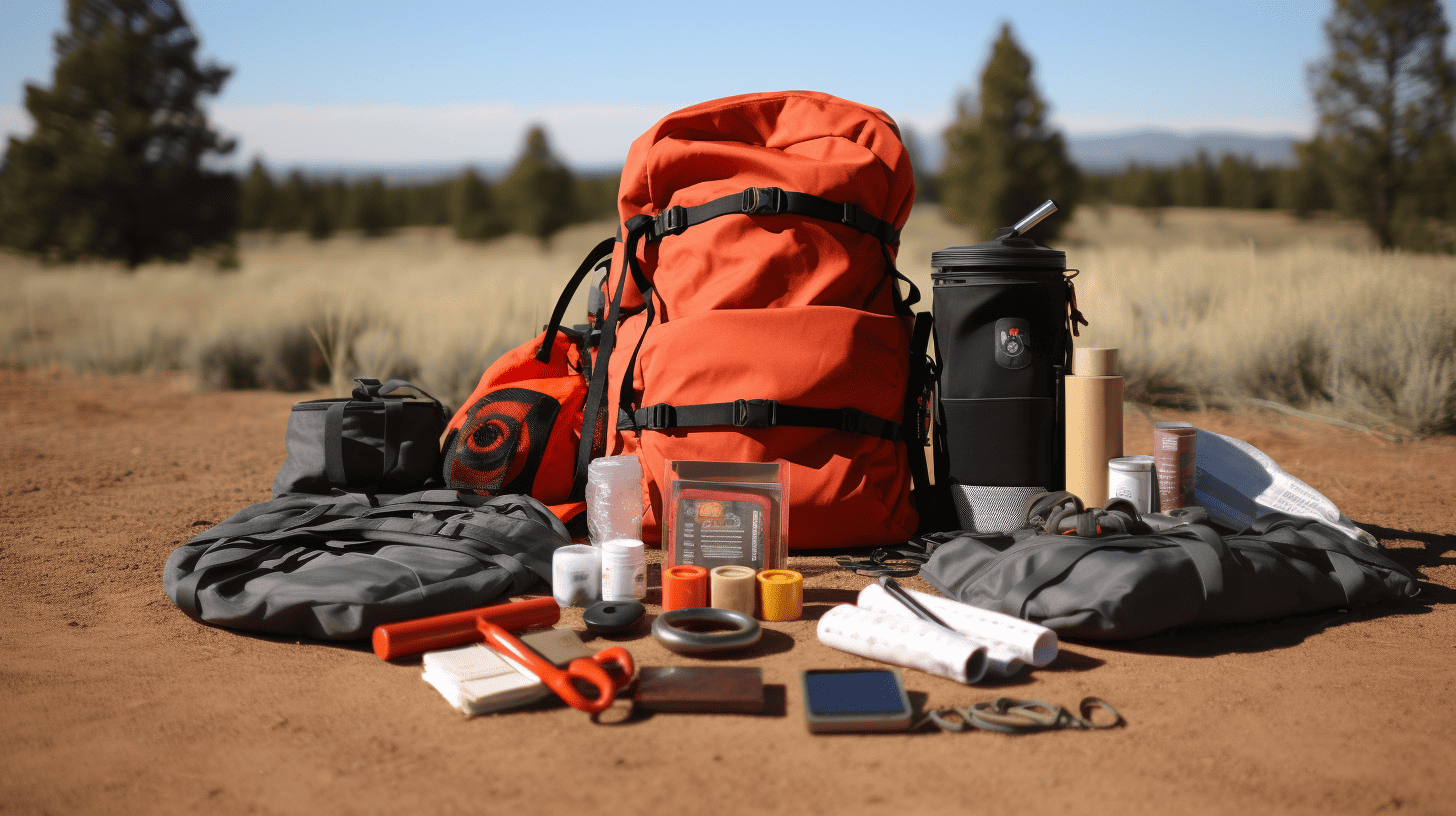
Again, always carry a map, compass, or GPS device to help you stay on track. A headlamp or flashlight with extra batteries is a must if it gets dark.
Lastly, a multi-tool or knife can be handy for everything from fixing gear to preparing food. With these items packed, you’ll be ready to tackle most challenges in the wilderness.
Additional Accessories and Considerations
Besides the basics, you'll want to pack some extras to make your day hike more enjoyable and comfortable.
These could include anything from your camera gear for capturing the scenery to handy gadgets that make exploring the backcountry a little easier.
1. Photography and Observation
Bringing a camera is a must if you want to capture the scenic views and wildlife. For those really into photography, using a tripod can help stabilize your shots, especially in low light or when you're using long lenses.
Binoculars are handy for checking out distant wildlife or getting a closer look at the landscape. And if you’re into making videos, consider packing a durable GoPro.
It's tough enough to handle the rugged outdoors and great for capturing your adventures.
2. Comfort and Convenience Items
For a comfortable hike, include a sun hat to protect against sun exposure and heatstroke.
In areas with lots of bugs—especially near water or campsites—bug spray is crucial. If you're tackling tough trails, trekking poles can really help keep you stable.
Always carry toilet paper in an eco-friendly bag for responsible disposal, maintaining a leave-no-trace ethic. If your hike might stretch into the evening, bring a lightweight lantern to ensure you can see and get back safely.
Wrapping Up Your Hike Prep
Packing wisely for a day hike in a national park ensures a safe, enjoyable, and environmentally responsible adventure.
By including essential gear, appropriate clothing, and a few extra comfort items, you can fully immerse yourself in the natural beauty and unique experiences each park offers.
Remember to respect the environment, stay prepared for unexpected situations, and, most importantly, enjoy the journey.
For more inspiration on exploring national parks, check out our guides on touring parks by Amtrak or planning the ultimate Texas national parks road trip.
